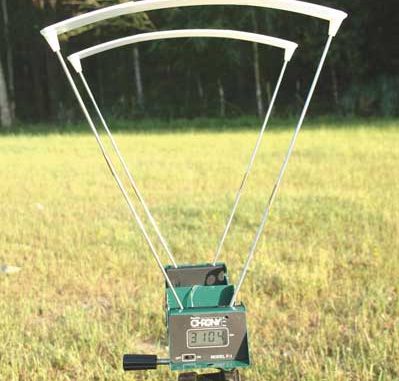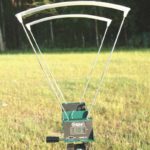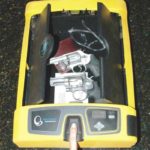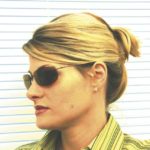
After World War II, in the late 1940s and the decade following, the golden age of shooting known as the “Wildcatting Era” began. Young men returned from the war with a shooting jones, and discovered a shortage of bullets. Many began rolling their own to feed their habit.Great companies that are watchwords in the ammunition and reloading business today, like Speer and RCBS, got their boost after the war by rolling used .22 cases into bullets for reloading. These companies scoured the country for spent .22 shells, and rolled them into quality bullets for reloading.
It was inevitable people would begin experimenting, thus the term “wildcatting.” Some of the most popular hunting rounds today came about because a reloader decided he could make an existing cartridge into something bigger, smaller, hotter, more hard-hitting, etc.
Examples from the wildcatting years include the .22-250 — a .250 Savage cartridge necked down to .22 caliber. How about the .244 Remington — later introduced as the 6MM Remington? One of the most popular hunting cartridges in the world after WWII was the 7X57, or 7MM Mauser. The .244 Remington, introduced commercially by that company in 1955, was a 7×57 necked down to .244 or 6MM. That same year, the .243 Winchester was introduced, simply a necked-down .308, or 7.62 NATO cartridge.
Dozens of cartridges developed by wildcatters were standardized by ammunition companies as they grew in popularity, only to see demand fall off, and the calibers discontinued. Some of the great old varmint cartridges from that era such as the .219 Zipper and the .218 Bee either are no longer commercially reloaded, or can be found only with specialty reloaders.
My uncle, a chemical engineer for what was then called Standard Oil (now Exxon) and a bunch of his buddies were neck-deep in all this experimentation. Everyone was wildcatting new cartridges, and these guys invented their own.
The .348 Winchester case was a powerful, rimmed cartridge designed for the Model 71 Winchester lever-action rifle. Looking like an over-sized .30-30 case, it hurled dinner plate-diameter bullets down range at impressive velocities, but because of the flat-nosed bullets, it was mainly a brush and short-range gun.
This group of young engineers decided to take a .348 Winchester and reduce its case mouth until it was spitting out something as close to the diameter of a phonograph needle as possible.
But the mechanics of the situation determined the best they could do was neck the .35 caliber case down to .25 caliber. They sent off to one of the major barrel manufacturers like Douglas, or Schilling, and had a barrel bored out in the new caliber they proudly dubbed “Beulah Bell.”
When the barrel came back, they built a new rifle the same way everyone else was doing it — they got the action from a ‘98 Mauser, mated the two, slapped the barreled action into a dark walnut stock, and started working up loads.
Back then, no one had chronographs. These were bulky, expensive pieces of equipment mainly found in laboratories — and certainly out of the price range of young men just beginning their professional careers, no matter their pay scale.
But these were engineers, remember? So they worked up what was known as a “ballistic pendulum.”
I won’t even begin to attempt to explain the math — I couldn’t — but such a device marked the distance a pendulum swung upon being struck by a bullet, and through some brain-twisting mathematics, the velocity of the bullet could be worked out.
Upon firing Beulah Bell after they had worked up acceptable loads, it was determined their creation was pushing the .25-caliber projectile somewhere in the neighborhood of 4,000 feet per second! This put Beulah Bell in the same vaunted territory as the legendary .220 Swift, and some amazing feats were accomplished with that old rifle before they retired it — like shooting at one crow on a tree limb, and having the crow disintegrate and shrapnel from the bullet killing the crow next to it.
Another time, one of them shot at a buzzard sitting on a dirt road in a cotton field. The buzzard was about 100 yards away when the trigger was pulled. The resulting mess strung buzzard entrails and bloody feathers for another 100 yards. Beulah Bell was quite the impressive performer on shooting excursions for years, and grew legendary in her feats of accuracy and varmint-exploding scenes of gore.
The whole point of this stroll down shooting’s memory lane, aside from paying homage to those who paved the way for the rest of us to enjoy our sport today, was to show how fortunate we are in the accessories and equipment we now enjoy.
The group consisting of my uncle and his friends would have given a lot to have the equipment we use today without a second thought.
Take that ballistic pendulum, for instance. I was reminded of what my uncle went through to determine how fast his bullets were traveling as I set up to shoot on a recent afternoon.
I have a high-quality Oehler chronograph, which cost a pretty piece of money back in the 1970s, but at least by that time, they were somewhat affordable. This particular model has three diffusers and a bunch of wires you need to run back to the miniature computer that sits by you as you fire your gun.
It is an immensely versatile and highly accurate piece of equipment, and capable of performing and registering far more numerical tricks than I care to learn. Because it is pretty much a pain to set up, it gets used very little, except when I have some serious testing going on.
But I finally got my hands on something I’ve been wanting ever since I tried one on a range in Texas. Called a Shooting Chrony 1, this is the most inexpensive of several models, all of which can be upgraded to take computers and printers to get shot strings, memory, standard deviation and a whole lot of other stuff I rarely need. But I do like to know what speed my bullets are producing, and this little compact unit (it measures only 2.5 x 4 x 7.5 inches folded) unfolds into a 9-volt powered, 2 1/2-pound package of fun.
Testing some old .38 Special target loads, we found they ranged from a low of around 600 fps upwards past 700 fps. Inexpensive reloads, we decided the quality control on powder weights was pretty haphazard.
I then tested my new rifle factory loads — 150-grain .300 SAUM (Remington Short-Action Ultra Magnum.) These factory loads were pleasingly consistent, showing a range of velocities in four shots of 3,074, 3,087, 3,098 and 3,118 — a consistent velocity pattern that approximated the listed factory ballistics of 3,200 fps — out of a longer barrel than my 22-inch pipe, so I was pleased indeed.
Shooting Chronys are light, portable and laughably easy to set up on a standard camera tripod. I found them all over the internet, and prices start so low (around $80) you’re almost tempted to go for one of the higher-priced models up front.
But if you’re interested in simply finding out how fast your bullets fly, you can’t get any more inexpensive (or accurate, I assume) than here (www.shootingchrony.com).
Safe storage
One of the biggest hassles for any conscientious gun owner is keeping your guns secure — out of the hands of prying visitors or curious kids. Particularly with kids, we have a quandary that stymies many gun owners.
How do you secure a handgun so a kid can’t get it and yet have it readily available for use?
Up until recently, the two purposes were mutually exclusive — if the handgun was secured, it pretty much wasn’t easy to get to in a time of emergency. Trigger locks, gunsafes, the whole gamut of security procedures meant you had to unlock your gun at night before you went to bed and remember to lock it back up before you left the next morning — and I can assure you I would never remember to do it every time.
Now, with the advent of the science of biometrics, I think we have an answer. Meet the BioVault.
Simply by reading your fingerprint, the BioVault springs open two heavy panels in a clamshell pattern that expose a storage area large enough to hold several pistols and boxes of ammunition very comfortably.
Operated either by battery or A/C power, the vault can be locked to the wall, chained to furniture or, simply as I do, leave it under the edge of the bed. At night, with small children in the house, you can swipe your finger, causing the vault to spring open and expose your trusty burglar repellent. In the morning, as you get out of bed, simply lean over and push down on the clamshell doors to lock the handguns away from any prying hands.
You can register up to 50 fingerprints — which precludes the worry about losing a hand or all the fingers on a hand. The company recommends you register several fingers several times each. I did it with several fingers on both hands. Then, I had my wife do the same. Once I figured out the sensitivity factor and how to properly “swipe” the fingers, it went fairly quickly.
I wouldn’t recommend trusting it for emergency access in the middle of the night. Sometimes in a rush, it can take several swipes before the fingerprint is caught — in the panic of a possible home invasion, this could waste precious seconds. Instead, it is much safer to do as recommended above — keep one loaded pistol in the BioVault for self-defense, and open it at night before you go to bed. Of course, if you need it during the day, generally one “swipe” will get you access, and as with all things, I have found it gets easier with practice.
These handy units are surprisingly affordable, only $299 plus shipping through the NRA. Go to www.nragunsafe.com/training to find out more about these units. I bought one for my classes, and it has been a hit in the “Child Access Prevention” portion of our concealed carry courses. Using my instructor number — 20893982 — will get you free shipping. If you buy enough of them, I get a discount on one — no help since I already bought mine — but the $30-$50 savings on shipping should be a nice incentive for you to buy the neatest safety device I’ve seen yet for securing a handgun, yet keeping it accessible.
The eyes have it
I’ve talked about it before in this column, but one of the most pervasive and aggravating problems for shooters from my generation is “presbyopia.”
Generally starting in one’s 40s, the ocular lenses of the eyes lose their elasticity, and do not curve as well, resulting in the need for “reading” glasses to be able to do small work, read or anything up close. It’s called farsightedness, and I can see great at a distance, with near 20-20 vision, but need mild readers to tie a fish hook, read a book, read the caliber on a cartridge or the gauge on a shell — a really important thing to be able to do if you are a shooter.
If you wear sunglasses incessantly, as I do, this requires you to carry two pairs of glasses — one to cut out the glare and a pair of “readers” to help you read the caliber designation on the cartridge box.
A company called ONO’s has pioneered the manufacture of shooting glasses with built-in reading lenses — bifocal lenses optically correct, but with a reading lense in the bottom of the main lense that allows you to naturally glance down and utilize the magnification power of the lower one.
There are many different manufacturers of these on the market now, and I’ve gotten headaches from several, but ONO’s seems to have the whole lense thing under control. They are headache-free, and an unobtrusive magnification lense allows you to simply glance down and read the dial of your watch without having to remove your sunglasses and put on your readers.
Now ONO’s has addressed the fashion issue also. These polarized bifocal reader sunglasses feature hingeless temples and thin, scratch-resistant polycarbonate lenses treated on both sides to resist body oils and perspiration.
I detest the term unisex — it brings to mind a thankfully forgotten time of discotheques, overbearing women and men lacking in gender identity — but obviously these Schooners work, and look good on men and women on and off the range.
Find these and other unusual optical products at www.onostradingcompany.com.
Gordon Hutchinson’s newest book, co-authored with Sportsman Editor Todd Masson, is The Great New Orleans Gun Grab, an expose’ of the gun-confiscation scandal that occurred in New Orleans after Hurricane Katrina. It can be found at www.neworleansgungrab.com.
Hutchinson’s first book, The Quest and the Quarry, is a generational tale that parallels the lives of a line of trophy bucks and the youth of a farm family that hunts them.
It was chosen as a book of the year by the Southeastern Outdoor Press Association. It can be found at www.thequestandthequarry.com.
Both books can be ordered by calling (800) 538-4355.





